
A fossil is any preserved remains, impression, or trace of any once-living thing from a past geological age. Examples include bones, shells, exoskeletons, stone imprints of animals or microbes, objects preserved in amber, hair, petrified wood, oil, coal, and DNA remnants. The totality of fossils is known as the fossil record.

Paleontology, also spelled palaeontology or palæontology, is the scientific study of life that existed prior to, and sometimes including, the start of the Holocene epoch. It includes the study of fossils to classify organisms and study their interactions with each other and their environments. Paleontological observations have been documented as far back as the 5th century BCE. The science became established in the 18th century as a result of Georges Cuvier's work on comparative anatomy, and developed rapidly in the 19th century. The term itself originates from Greek παλα, ὄν, and λόγος.

A passerine is any bird of the order Passeriformes, which includes more than half of all bird species. Sometimes known as perching birds or songbirds, passerines are distinguished from other orders of birds by the arrangement of their toes, which facilitates perching.
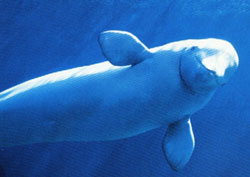
The cetacean family Monodontidae comprises two living whale species, the narwhal and the beluga whale and at least four extinct species, known from the fossil record. Beluga and Narwhal are native to coastal regions and pack ice around the Arctic Ocean. Both species are medium-sized whales, between three and five metres in length, with a forehead melon, and a short or absent snout. They do not have a true dorsal fin, but do have a narrow ridge running along the back, which is much more pronounced in the narwhal. They are highly vocal animals, communicating with a wide range of sounds. Like other whales, they also use echolocation to navigate. Belugas can be found in the far north of the Atlantic and Pacific Oceans; the distribution of narwhals is restricted to the Arctic and Atlantic Oceans.
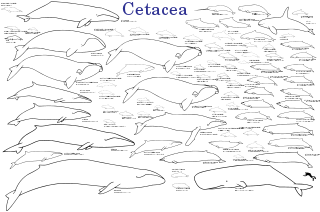
The evolution of cetaceans is thought to have begun in the Indian subcontinent from even-toed ungulates 50 million years ago and to have proceeded over a period of at least 15 million years. Cetaceans are fully aquatic marine mammals belonging to the order Artiodactyla and branched off from other artiodactyls around 50 mya. Cetaceans are thought to have evolved during the Eocene or earlier and to share a relatively recent closest common ancestor with hippopotamuses. Being mammals, they surface to breathe air; they have 5 finger bones (even-toed) in their fins; they nurse their young; and, despite their fully aquatic life style, they retain many skeletal features from their terrestrial ancestors. Research conducted in the late 1970s in Pakistan revealed several stages in the transition of cetaceans from land to sea.
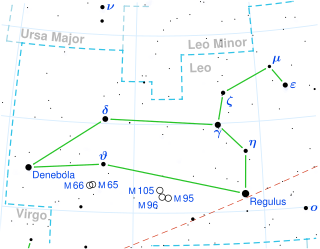
Denebola, designated Beta Leonis is the second-brightest star in the zodiac constellation of Leo, although the two components of the γ Leonis double star, which are unresolved to the naked eye, have a combined magnitude brighter than it. Denebola is an A-type main sequence star with 75% more mass than the Sun and 15 times the Sun's luminosity. Based on parallax measurements from the Hipparcos astrometry satellite, the star is at a distance of about 36 light-years from the Sun. Its apparent visual magnitude is 2.14, making it readily visible to the naked eye. Denebola is a suspected Delta Scuti type variable star, meaning its luminosity varies very slightly over a period of a few hours.

Myxophaga is the second-smallest suborder of the Coleoptera after Archostemata, consisting of roughly 65 species of small to minute beetles in four families. The members of this suborder are aquatic and semiaquatic, and feed on algae.
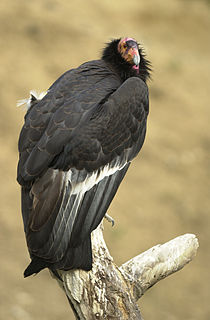
Incertae sedis or problematica is a term used for a taxonomic group where its broader relationships are unknown or undefined. Alternatively, such groups are frequently referred to as "enigmatic taxa". In the system of open nomenclature, uncertainty at specific taxonomic levels is indicated by incertae familiae, incerti subordinis, incerti ordinis and similar terms.

Desmatophoca is an extinct genus of early pinniped that lived during the Miocene, and is named from the Greek "phoca", meaning seal. A taxon of the family Desmatophocidae, it shares some morphological similarities with modern true seals. Two species are recognized: Desmatophoca oregonensis and Desmatophoca brachycephala. Little information exists regarding Desmatophoca, due to the small number of fossil samples obtained and identified.

USS Denebola (AD-12) was an Altair-class destroyer tender named for Denebola, the second-brightest star in the constellation Leo.

The São Tomé collared fruit bat is a species of megabat in the family Pteropodidae. It is endemic to São Tomé and Príncipe. Its natural habitats are subtropical or tropical moist lowland forest and subtropical or tropical moist montane forest. It is threatened by habitat destruction. This bat is unique in that it is the only known mammal where the whole population has an asymmetrical dental formula.

Myonycteris is a genus of bat in the family Pteropodidae.

USS Denebola (AF-56) was a Denebola-class stores ship acquired by the U.S. Navy. She was built as SS Hibbing Victory as a type VC2-S-AP2 Victory ship built by Oregon Shipbuilding Corporation of Portland, Oregon, under a Maritime Commission. The Maritime Administration cargo ship was the 113th ship built. Its keel was laid on 2 May 1944. The ship was christened on 30 June 1944. She was built at the Oregon Shipbuilding yards in just 59 days, under the Emergency Shipbuilding program for World War II. The 10,600-ton ship was constructed for the Maritime Commission. She was operated by the (Pacific-Atlantic SS Company under the United States Merchant Marine act for the War Shipping Administration. The other two ships in her class were USS Regulus and USNS Perseus. USS Denebola's task was to carry stores, refrigerated items, and equipment to ships in the fleet, and to remote stations and staging areas.

Paracryptodira are an extinct clade of turtles in the order Testudines, known from the Jurassic to Paleogene of North America and Europe. Initially treated as a suborder sister to the Cryptodira, they were then thought to be a very primitive lineage inside the Cryptodira according to the most common use of the latter taxon. They are now considered to be a third fundamental division of the Testudines, alongside Cryptodira and Pleurodira. The paracryptodirian turtles are said to have phylogenic relationships, noted as primary subclades, within the Baenidae and Pleurosternidae. Within each subclade, lies many biodiverse turtles that are continuously being investigated and added to the fossil record. Paracryptodires are divided into 3 main groups, Compsemydidae, known from the Late Jurassic to Paleocene of North America and Europe, Pleurosternidae, known from the Late Jurassic to Early Cretaceous of North America and Europe, and Baenidae, known from the Early Cretaceous to Eocene of North America. The latter two groups are more closely related to each other than to Compsemys, forming the clade Baenoidea.

Lepicerus is a genus of myxophagan beetles containing three described species in the family Lepiceridae; it is the only extant genus in the family, with another genus, Lepiceratus only known from fossils. Extant species occur in the Neotropics, from Mexico south to Venezuela and Ecuador. Fossils referrable to the genus are known from the early Late Cretaceous of Southeast Asia.
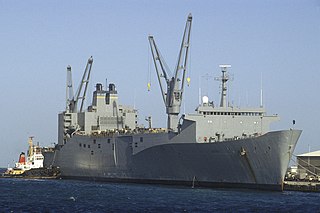
SS Denebola is an Algol-class vehicle cargo ship that is currently maintained by the United States Maritime Administration as part of the Military Sealift Command's Ready Reserve Force (RRF). She was built as a high speed container ship by Rotterdamsche D.D.Mij N.V. in Rotterdam, Netherlands, hull no. 332, for Sea-Land Service, Inc. and named SS Sea-Land Resource, USCG ON 550723, IMO 7325253. Due to her high operating cost, she was sold to the United States Navy in October 1981 as USNS Denebola (T-AK-289).

Trionyx is a genus of softshell turtles belonging to the family Trionychidae. In the past many species in the family were classified in this genus, but today T. triunguis, the African or Nile softshell turtle, is the only extant softshell still classified as Trionyx. The other species still assigned to this genus are only known from fossils. T. triunguis is a relatively large, aquatic piscivore.
The Almejas Formation is a geologic formation in Mexico. It preserves fossils dating back to the Late Miocene to Early Pliocene of the Neogene period.
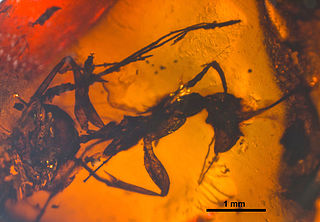
Zherichinius is an extinct genus of ants in the subfamily Dolichoderinae known from fossils found in amber from the Middle Eocene of Sakhalin island Far eastern Russia and Bitterfeld, Germany. At the time of description the species Zherichinius horribilis and Zherichinius rapax were two of eight ant species known from Sakhalin fossils.




















